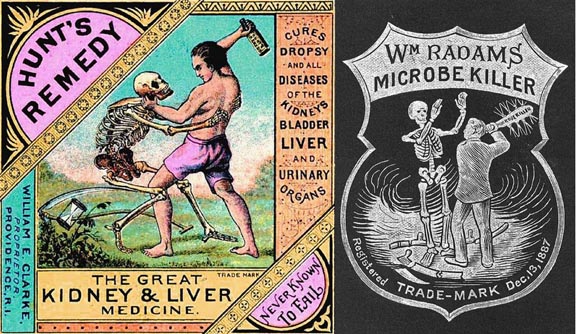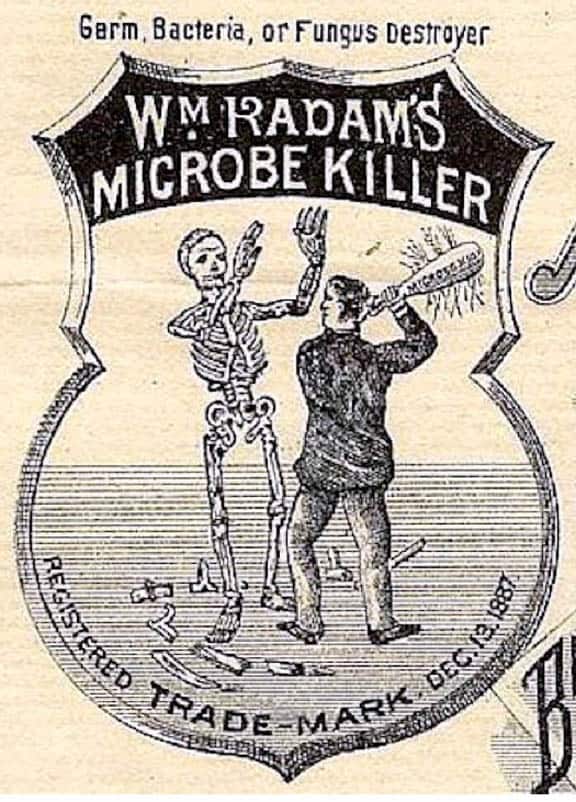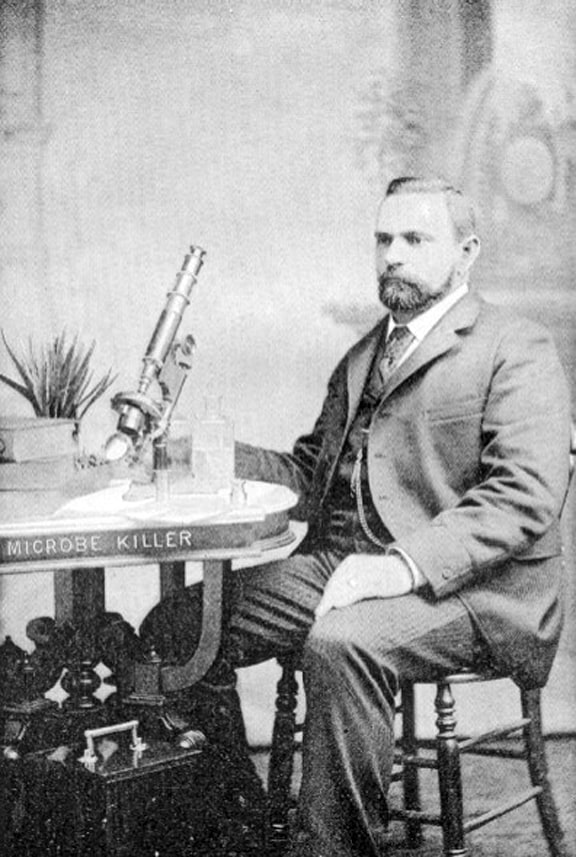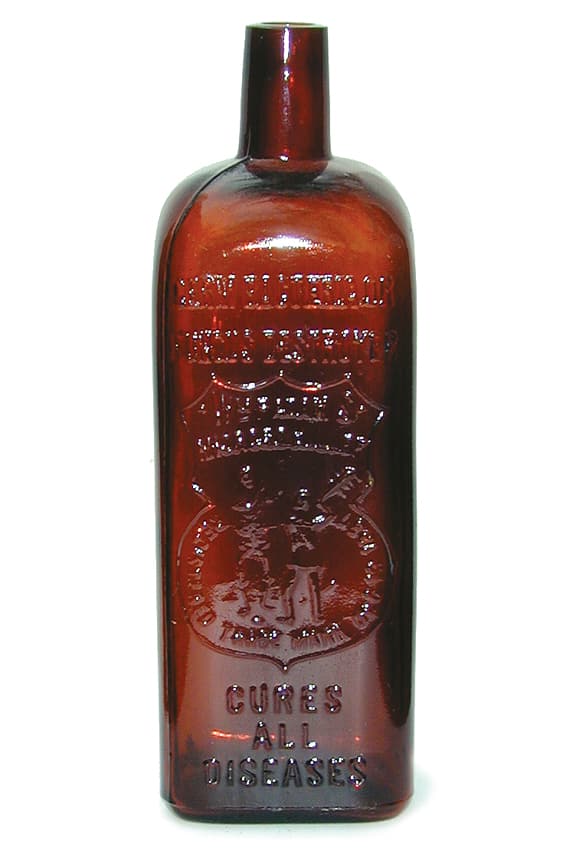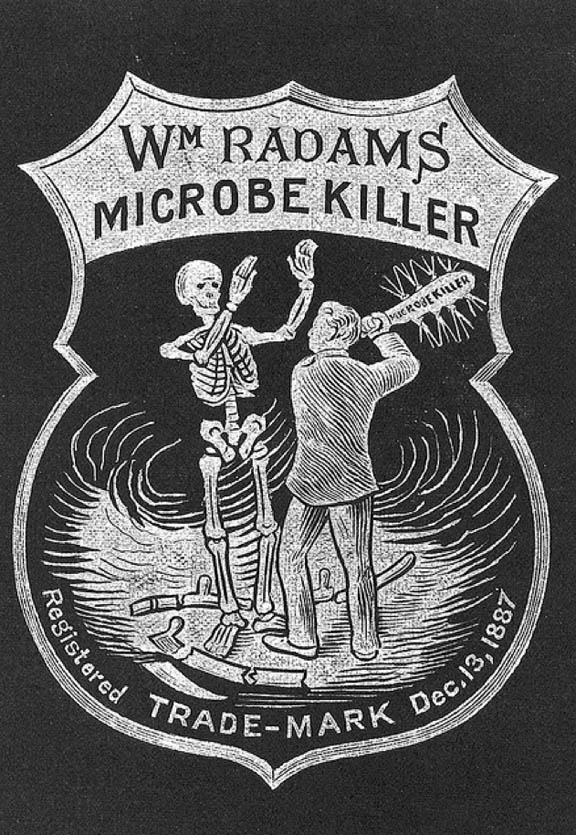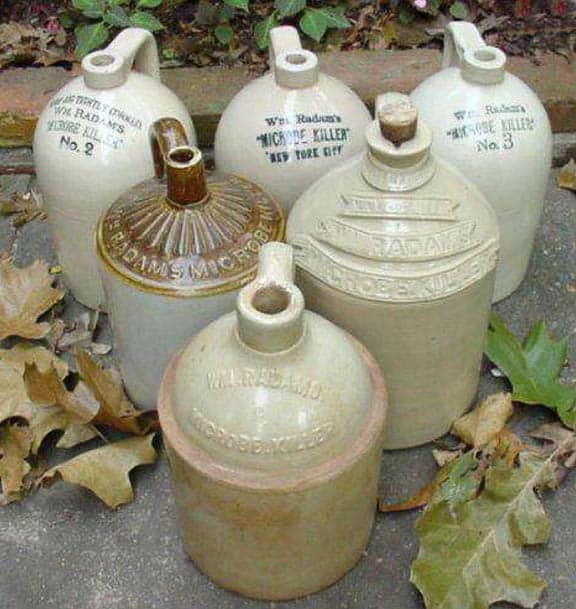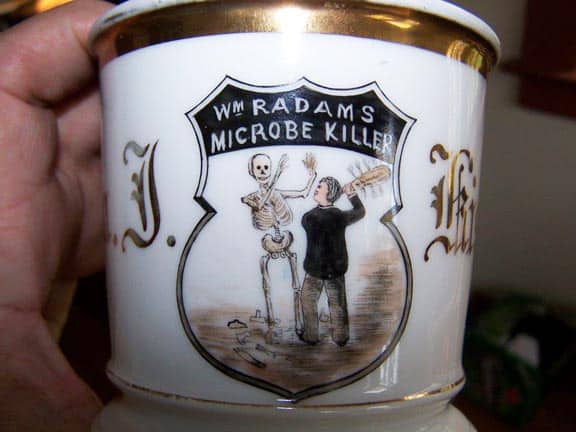I developed a post yesterday on the wonderful graphics and associated material related to Hunts Remedy from Providence, Rhode Island. (Read: Fighting Skeleton and Beating off Death – Hunt’s Remedy). The symbolic skeleton, scythe, hour glass and patient using a bottle of Hunt’s Remedy to beat away death is outstanding. During the post I was constantly thinking of Radam’s Microbe Killer and wondering how similar the graphics were as they both used similar art (see above).
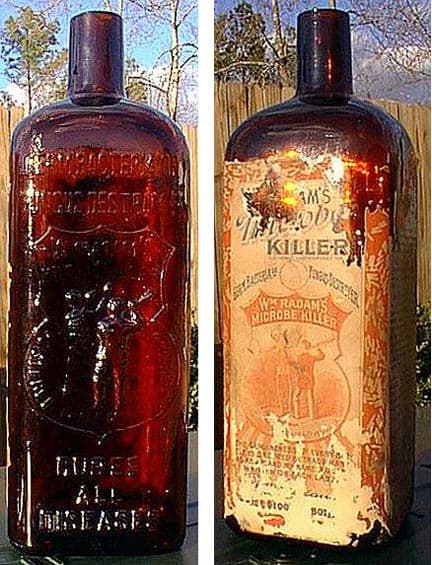
GERM BACTERIA OR FUNGUS DESTROYER Wm RADAM'S MICROBE KILLER {man beating skeleton} REGISTERED TRADE MARK DEC 13, 1887 CURES ALL DISEASES - Cure Bottle Hall of Fame - antiquebottles.com
Many of us own an example of a Radam’s simply because of the pronounced embossed graphics on the bottle face (see above). If you look at the graphics, (refer to the advertising art as it is easiest to see) you will notice the absence of the hourglass and that the scythe is broken into pieces. The gentlemen is also not using a bottle to beat the skeleton as in the Hunt’s Remedy art. The Radam’s Microbe Killer art substitutes a club with the Radam’s product name written on the club side.
Mr. Radam was an interesting man as you will see and really knew how to spin a story and appeal to peoples fears. He represented quack medicine to the fullest with his outlandish boasts. I think it is interesting or alarming, depending on how you look at it, that there is very similar medicinal product advertising happening today that makes incredible promises. The only difference is a page full of small copy to warn of side effects and sometimes death…so consult your doctor first right?
The symbolic skeleton, scythe, hour glass and patient using a bottle of Hunt’s Remedy to beat away death is outstanding.
“William Radam probably perpetrated the biggest medicinal hoax of all with his celebrated Microbe Killer”.
“Germ, Bacteria or Fungus Destroyer”
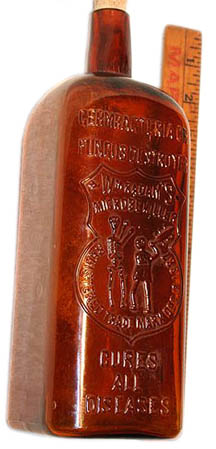 Since its annexation into the United States in 1845, Texas has provided a home to its share of medical quacks who made their living off of the desperate and the scientifically illiterate.
Since its annexation into the United States in 1845, Texas has provided a home to its share of medical quacks who made their living off of the desperate and the scientifically illiterate.
Of the many Texan nostrum peddlers throughout history, however, William Radam probably perpetrated the biggest medicinal hoax of all with his celebrated Microbe Killer. This elixir was even more successful because it made its debut just as the link between microbes and disease was first being documented. As science would eventually demonstrate, the Microbe Killer was absolutely worthless.
William Radam was a native of Prussia, and once served in the Prussian army; however, his first love was gardening. Radam eventually moved to Austin, Texas, and established a gardening store and nursery, tending to his 30 acres of land for nearly two decades. Then he was taken ill with malaria, and sought out doctors who prescribed various drugs for him; in his 1890 book Microbes and the Microbe Killer, Radam stated: “I swallowed the contents of bottle after bottle, until their number became too great for calculation. I took quinine until it failed to have any effect.” Rheumatism and sciatica made Radam’s life even more difficult, and then two of his own children died. At that point, the broken-hearted and ailing Radam, no longer strong enough to attend to his affairs, began his own quest to cure himself. [William Radam and the Microbe Killer]
Read Further: William Radam and the Microbe Killer – An Account of Classic Medical Quackery from the Heart of Texas by Daniel R. Barnett
Read Further: William Radam’s Microbe Killer by Joe Widman
Read Further: Radam v. Capital Microbe Destroyer Company by John Odell
The Daily Gazette, Xenia, Ohio, 16 November 1889
Wm RADAM’S MICROBE KILLER
Nearly all well-read people are familiar with the scientific investigations of Profs Koch and Pasteur, respectively of Germany and France, as well as a number of other scientists of almost equal renown, whose experiments have proven conclusively that all diseases are causes by microbes in the blood. They are called microbes, because they are a living matter, and only discovered by the aid of powerful microscopes.
But until William Radam discovered his Microbe Killer Medicine there was absolutely nothing known in the annals of Medicine that would destroy these Microbes or Germs of Diseases existing in the blood. The Microbe Killer does Kill the Microbes in the blood without fail, as the thousands of testimonials we have in our possession demonstrate. Microbes being the cause of all diseases, Microbe Killer will therefore cure them.
WE EXCEPT NO DISEASES WHATEVER. Ladies and gentlemen desiring light upon the Microbe Theory, as well as upon any disease they may be afflicted with, are cordially invited to call and get pamphlets for full particulars. We will forfeit $1,000 if any single one of our testimonials can be proven as not genuine. RADAM’S MICROBE KILLER CO.
For sale by E.C. FLEMING, Druggist, No. South Detroit Street
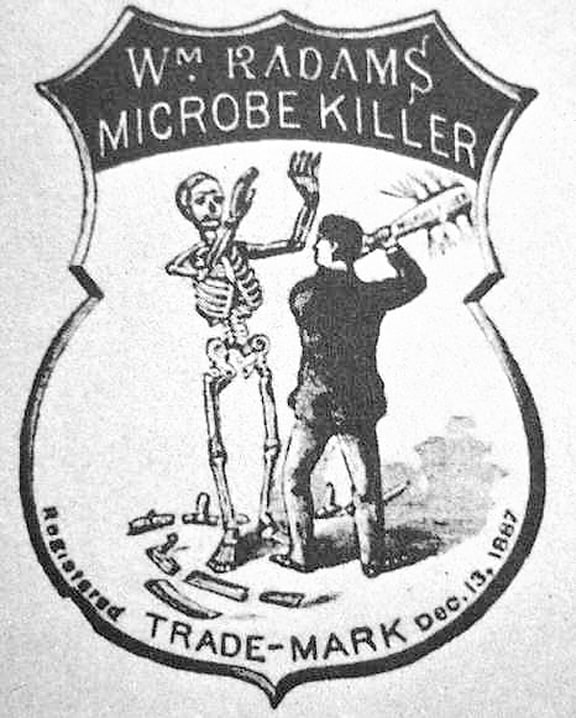
Trademark for the Radam's Microbe Killer. Note the broken scythe lying at the skeleton's feet - 6 Microbes and the Microbe Killer

